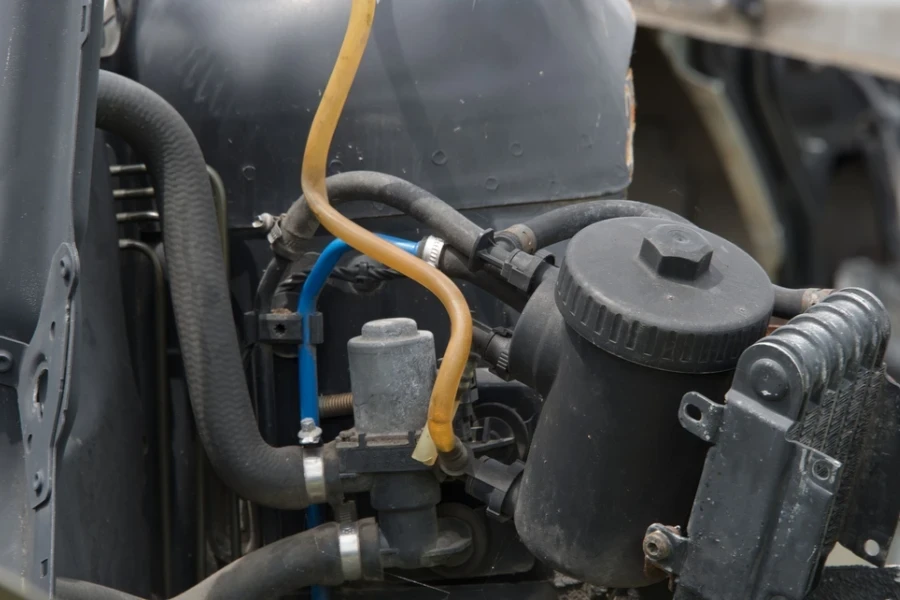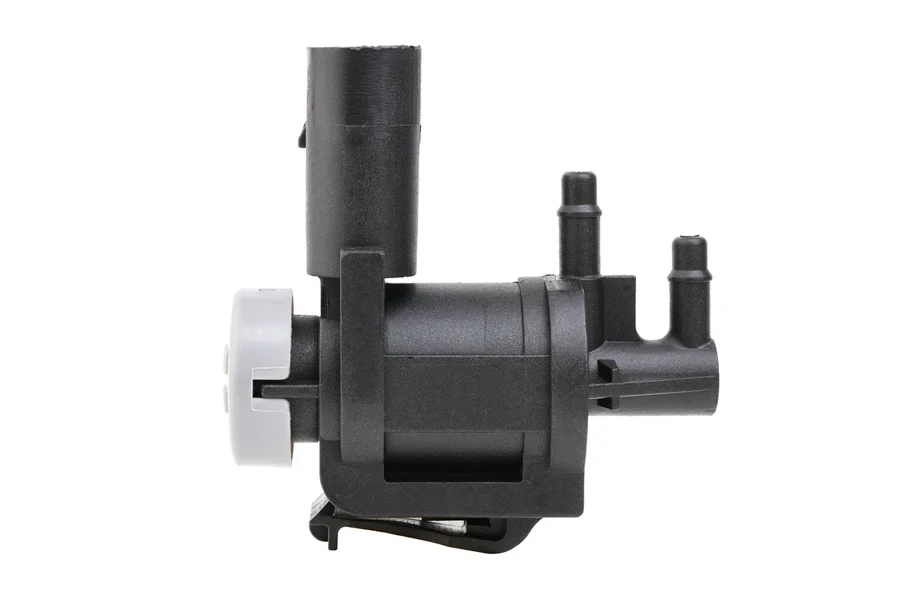In the past, vehicles would vent vapors from a hot engine directly into the air. This, unfortunately, was one of the world’s major pollution drivers, which is why regulators cracked down on it, pushing carmakers to develop better emission controls. One key result of all that pressure was the canister purge valve.
In this article, we’ll cover everything you need to know about this essential component, as well as what to look out for when stocking them for your business.
Table of Contents
A brief history of canister purge valves
How canister purge valves work
The EVAP system
A closer look at
The environmental impact
Common issues
Upgrades and futures development
Wrapping up
A brief history of canister purge valves

Before the 1970s, almost no one thought about the gases that seeped from vehicles’ fuel tanks. When air-quality studies connected these vapors to health and environmental problems, laws like the U.S. Clean Air Act forced automakers to find ways to trap and recycle them. Thus, the charcoal canister was born.
These containers, packed with activated carbon, “sponged up” fuel vapors instead of releasing them into the atmosphere. They worked to capture fumes, but eventually, those fumes still needed a place to go. This is where purge valves come in, which force the engine to burn the stored vapors.
Initially, these valves were basic and often vacuum- or temperature-triggered. By the 1990s, electronic controls had taken over, with computer components deciding precisely when to open or close the valve. This helped engines to run smoothly, prevented stalling when idling, and allowed cars to meet more stringent emissions regulations.
How canister purge valves work

The canister purge valve is the gatekeeper between the charcoal canister (which holds the trapped vapors) and the engine’s intake. When the car’s computer (or ECU) senses that the engine is warm enough and running under the right load, it sends a signal to open the valve, allowing the intake manifold to draw the vapors into the engine’s combustion chambers.
Those vapors will then burn like regular fuel, helping to reduce the amount of raw hydrocarbons that otherwise lead to smog. It also provides extra fuel efficiency since the engine can extract energy from these gas vapors.
How the EVAP system works

You can’t talk about canister purge valves without mentioning the car’s evaporative emission (EVAP) system because they work together. Here’s an overview:
- Fuel releases vapor in the tank after heat is applied
- The charcoal canister absorbs those vapors
- A vent valve (another electronically controlled component) then opens and closes the canister
- The purge valve then dictates when the engine draws those vapors from the canister. Here, timing is everything – too much or too soon, and the engine won’t run smoothly or can stall. Too little or too late, and the vapors won’t be burnt.
A closer look at the canister purge valve
Inside many modern purge valves is a solenoid, a coil of wire that becomes magnetic when the car’s computer supplies an electrical current. This magnetic field pulls a metal plunger or pintle (usually held shut by a spring), opening a pathway for the vapors to pass through.
Some valves are strictly on/off, operating either entirely open or entirely closed. But most newer models use a rapid pulsing technique, opening and closing in quick bursts. This helps them control the amount of vapor allowed into the engine.
Advanced “proportional” or “linear” valves go further, precisely controlling how wide they open to deliver vapor more smoothly. This kind of finesse prevents big surges of vapor that might disrupt engine performance or trip error codes.
The environmental impact of canister purge valves

From the outside, no one would suspect that this small plastic or metal part plays such a key role in pollution control. Yet collectively, these valves have made a significant impact on hydrocarbon emissions. Studies by groups like the EPA have found that properly functioning EVAP systems help reduce hydrocarbon emissions from gasoline vehicles compared to older, unregulated setups.
Another thing worth noting is that modern vehicles equipped with enhanced evaporative controls exhibit substantially lower permeation and vapor venting losses compared to pre-control vehicles. A study titled “Effectiveness of emissions standards on automotive evaporative emissions” supports this finding, showing that adopting strict evaporative emission standards and controls (like vapor recovery systems) can greatly reduce evaporative emissions.
Purge valves not only significantly reduce smog, but also reduce the gasoline smell that many old cars used to produce. A healthy purge valve and the rest of the EVAP system lock most of those fumes away until they can be burned.
Common issues

It’s not always obvious when a valve fails or starts acting up. Modern cars have warning lights and error codes that can clue drivers in. For example, a stuck-open valve might send too much vapor into the intake at idle, causing a rough or surging idle and possible stalling.
A valve stuck shut means drivers might see an error code about “incorrect purge flow” since the engine never gets the vapors it expects. Beyond that, drivers might notice a strong fuel odor if the system can’t handle vapors correctly or if a related hose is cracked. On older cars without sophisticated diagnostics, drivers often only realize there is a problem when their fuel efficiency dips or they start getting the “check engine” light.
In the case of a suspected faulty valve, they can be tested by hooking up a vacuum pump to see if the valve holds the vacuum when it’s supposed to be closed, or by using a multimeter to check the solenoid coil’s electrical resistance. If that’s inconclusive, a mechanic will use a smoke machine to pump smoke into the EVAP lines, revealing leaks in hoses, connections, or the valve itself.

Upgrades and future development
Purge valves are constantly being updated to meet new rules and adapt to new fuel types. Since ethanol blends (E10, E15, and up to E85) can be more corrosive than pure gasoline, modern valves and hoses often rely on specialized plastics and coatings that can withstand harsher conditions.
Hybrids also present a unique challenge since they do not burn gas as often, so they require more advanced “proportional” valves, delivering just the right amount of vapor on the occasions when the engine is firing.
Fully electric vehicles don’t require purge valves because there’s no fuel tank to vent. Still, combustion engines – whether in traditional or hybrid form – will be in use for years to come, so the canister purge valve remains relevant for the foreseeable future.
Wrapping up
Thanks to purge valves (and the rest of the EVAP system), modern vehicles waste far less fuel and produce significantly fewer harmful vapors. That means less smog, improved air quality, and improvements in mileage.
Purge valves also highlight an important point: environmental progress in the automotive world doesn’t always come from enormous, flashy changes. Sometimes, the little parts make all the difference.
Finally, you may want to inform your customers who encounter purge valve issues that checking for a faulty canister is a manageable DIY job, providing instructions accordingly.




